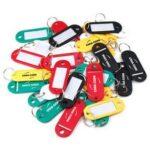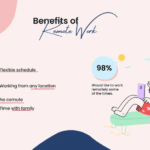Intro
Are you struggling to engage your hospitality email list and see conversions from your email marketing efforts? You’re not alone. With the constant influx of emails in consumers’ inboxes, it can be challenging to stand out and connect with your audience. However, building a strong and engaged hospitality email list is crucial for the success of your business. In this blog post, we’ll discuss 10 proven tactics that will help boost your hospitality email list engagement and ultimately drive more bookings and revenue for your hotel, restaurant, or other hospitality business. Let’s get started!
1) Understanding the Importance of a Quality Hospitality Email List
In the ever-evolving world of hospitality, it’s crucial to have a strong and engaged email list. A high-quality hospitality mailing list can be a game-changer for your business, driving more bookings, revenue, and overall success.
So, why is a quality hospitality email list so important? Well, first and foremost, it allows you to directly communicate with your target audience. By having a list of individuals who have willingly signed up to receive updates from your hotel, restaurant, or other hospitality business, you have a direct line of communication to potential guests and customers.
Furthermore, a quality email list gives you the opportunity to build and nurture relationships with your audience. You can send personalized and targeted emails that resonate with your subscribers, providing them with valuable information, promotions, and special offers. This helps to foster a sense of loyalty and trust, making them more likely to choose your business when they are in need of hospitality services.
2) Evaluating your Current Email List for Enhancements
Now that you understand the importance of a quality hospitality email list, it’s time to evaluate your current list for enhancements. This step is crucial in ensuring that you are targeting the right audience and maximizing the effectiveness of your email marketing efforts.
Start by analyzing your hospitality mailing list and identifying any gaps or areas for improvement. Look at factors such as the quality of your subscriber base, the engagement rates of your emails, and the overall performance of your campaigns. Are you attracting the right type of subscribers? Are your emails resonating with your audience? Are you seeing the desired level of conversions and bookings?
One way to evaluate your list is to conduct a thorough review of your email analytics. Look at metrics such as open rates, click-through rates, and unsubscribe rates to gain insights into the level of engagement your emails are generating. Pay attention to which emails are performing well and which ones are underperforming.
Another strategy is to send out surveys or feedback forms to your subscribers to gather their opinions and preferences. Ask questions about the type of content they want to see, their interests and preferences, and any specific promotions or offers they would like to receive. This information can help you refine your email marketing strategy and better target your audience.
Additionally, consider conducting a re-engagement campaign for inactive subscribers. Reach out to those who haven’t interacted with your emails in a while and offer them an incentive to re-engage. This could be a special discount, exclusive content, or a personalized offer. By re-engaging inactive subscribers, you can either revive their interest or clean your list by removing those who are no longer interested.
3) 10 Proven Tactics to Engage and Expand your Hospitality Email List
Building a high-quality hospitality email list is essential for engaging your audience and driving more bookings and revenue for your business. In this section, we’ll explore 10 proven tactics that will help you engage and expand your hospitality email list.
1. Create compelling opt-in incentives: Offer exclusive content, discounts, or freebies in exchange for email sign-ups. This will entice potential subscribers and provide them with immediate value.
2. Optimize your sign-up forms: Make sure your sign-up forms are visible and easy to use on your website. Keep them short and ask for only necessary information to increase conversion rates.
3. Segment your audience: Divide your email list into specific segments based on preferences, behavior, or demographics. This allows you to send targeted emails that resonate with each segment, resulting in higher engagement rates.
4. Personalize your emails: Use personalization techniques such as including subscribers’ names and sending tailored content based on their past interactions with your business. This will make your emails more relevant and increase engagement.
5. Use automation: Implement automated email sequences to nurture your subscribers and guide them through the customer journey. This will help build relationships and keep your brand top of mind.
6. Encourage social sharing: Include social sharing buttons in your emails to encourage subscribers to share your content with their networks. This can help expand your email list by reaching new audiences.
7. Optimize for mobile: With the majority of emails being opened on mobile devices, ensure your emails are mobile-friendly. Use responsive design and test your emails across various devices and email clients.
8. Provide valuable content: Offer useful and relevant content to your subscribers, such as travel guides, recipes, or insider tips. By providing value, you’ll keep them engaged and eager to receive your emails.
9. Run contests and giveaways: Host contests or giveaways that require participants to sign up with their email addresses. This can generate excitement, attract new subscribers, and increase engagement.
10. Test and analyze: Continuously test different email strategies, subject lines, layouts, and content to identify what resonates best with your audience. Use email analytics to track your progress and make data-driven decisions.
4) Best Practices for Email Campaign Design and Execution
When it comes to designing and executing your email campaigns for your hospitality mailing list, there are several best practices to keep in mind. These practices will help you maximize engagement and increase conversions.
Firstly, ensure that your emails have a clear and concise design. Keep your branding consistent and use a clean layout that is easy to read. Use images and visuals sparingly, and make sure they are relevant to the content of your email. Avoid clutter and focus on delivering a clear message to your subscribers.
Secondly, make sure your emails are mobile-friendly. The majority of emails are now opened on mobile devices, so it’s crucial that your email design is responsive and looks good on smaller screens. Test your emails across different devices and email clients to ensure a seamless experience for your subscribers.
Next, pay attention to your email subject lines. A compelling subject line can greatly increase open rates. Keep them short and concise, and use action-oriented or personalized language to entice your subscribers to open the email.
Personalization is another important aspect of email campaign design. Use the data you have collected from your hospitality mailing list to tailor your emails to individual subscribers. Include their names in the email and personalize the content based on their preferences or past interactions with your business.
Lastly, don’t forget to include a clear call to action in your emails. Whether it’s to book a room, make a reservation, or sign up for a promotion, make it easy for your subscribers to take the desired action. Use a clear and visible button or link to direct them to the next step.
5) Monitoring Progress and Measuring Success
Once you have implemented the tactics to engage and expand your hospitality email list, it’s important to monitor your progress and measure your success. This will help you understand the effectiveness of your email marketing efforts and identify areas for improvement.
One key metric to track is your email open rate. This measures the percentage of subscribers who open your emails. A high open rate indicates that your subject lines are compelling and enticing enough to grab your audience’s attention. You can also track your click-through rate, which measures the percentage of subscribers who click on the links within your emails. This metric indicates the level of engagement and interest your emails are generating.
Another important metric to consider is your conversion rate. This measures the percentage of subscribers who take the desired action, such as making a booking or purchasing a product, after receiving your email. A high conversion rate indicates that your emails are effective in driving revenue for your hospitality business.
To measure the success of your email campaigns, you can also track metrics such as unsubscribe rate, bounce rate, and spam complaints. These metrics provide insights into the overall health and engagement of your email list.
7) Addressing Common Challenges in Hospitality Email Marketing
While email marketing can be a powerful tool for the hospitality industry, it does come with its own set of challenges. Addressing these challenges is crucial to ensuring the success of your email campaigns.
One common challenge is ensuring that your emails are actually reaching the intended recipients. With spam filters becoming more sophisticated, it’s important to follow best practices and avoid triggers that might flag your emails as spam. This includes using clear and concise subject lines, avoiding excessive use of promotional language, and regularly cleaning your email list to remove inactive or unengaged subscribers.
Another challenge is keeping your content fresh and engaging. With so many businesses vying for attention in consumers’ inboxes, it can be difficult to stand out. To overcome this, focus on delivering valuable and relevant content that resonates with your audience. Use personalization techniques to tailor your emails to individual subscribers, and regularly test different email strategies to identify what works best.
Lastly, balancing frequency is a challenge faced by many hospitality businesses. Sending too many emails can lead to subscriber fatigue and increased unsubscribe rates, while sending too few can result in decreased engagement. Finding the right balance will require analyzing your audience’s preferences and behavior, and adjusting your email frequency accordingly.
8) Key Takeaways & Next Steps Towards an Effective Hospitality Email List
As we wrap up this comprehensive guide to boosting your hospitality email list engagement, let’s recap the key takeaways and outline the next steps towards building an effective email list for your business.
1. A quality hospitality email list is crucial for direct communication with your target audience and nurturing relationships.
2. Evaluate your current email list for enhancements by analyzing email analytics and gathering feedback from subscribers.
3. Implement proven tactics like creating compelling opt-in incentives, segmenting your audience, and providing valuable content.
4. Follow best practices for email campaign design and execution, including clear and concise design, mobile optimization, personalization, and a strong call to action.
5. Monitor your progress and measure success by tracking metrics such as open rates, click-through rates, and conversion rates.
1. Continuously refine and optimize your email marketing strategies based on data-driven decisions.
2. Regularly evaluate and clean your email list to ensure it remains engaged and responsive.
3. Stay updated on industry trends and adjust your tactics accordingly to stand out in consumers’ inboxes.
4. Keep addressing common challenges such as spam filters, content freshness, and email frequency to maintain a successful email marketing campaign.
Conclusion
In this comprehensive guide, we have explored various strategies and tactics to help you boost engagement and expand your hospitality email list. Building a high-quality email list is essential for the success of your hotel, restaurant, or other hospitality business, as it allows you to directly communicate with your target audience, build relationships, and personalize your messages.
By understanding the importance of a quality hospitality email list, evaluating your current list for enhancements, and implementing proven tactics such as creating compelling opt-in incentives, segmenting your audience, and providing valuable content, you can significantly increase engagement and drive more bookings and revenue.
Additionally, we have discussed best practices for email campaign design and execution, monitoring progress and measuring success, as well as addressing common challenges in hospitality email marketing. By following these guidelines and continuously refining your strategies, you can overcome obstacles and ensure the effectiveness of your email marketing efforts.



